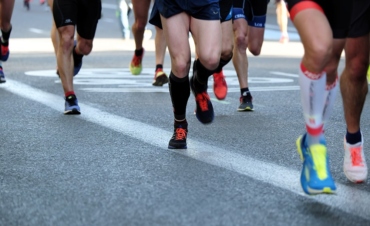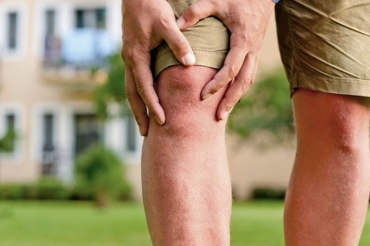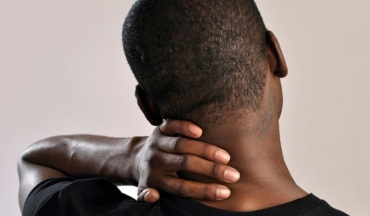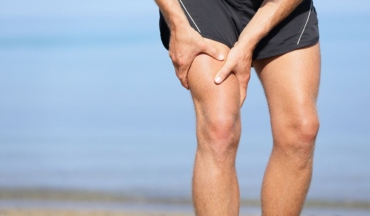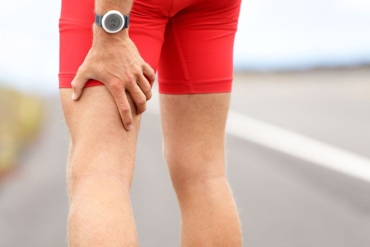Download and print the injury report form here.
Overview
Lateral ankle sprains are one of the most common injuries occurring in sports.
Soccer players are at an increased risk due to the nature of the sport incorporating running, kicking, quick changes of direction, and playing surface.
Grading a Sprain
There are 3 Grades of ankle sprain, which depends on the amount of damage sustained in the ligament of your ankle.
- Grade 1: mild damage to a ligament or ligaments without instability of the affected joint. No visible bruising or swelling.
- Grade 2: partial tear to the ligament, in which it is stretched to the point that it becomes loose. Visible Bruising and swelling.
- Grade 3: complete tear of a ligament, causing instability in the affected joint. Substantial bruising and swelling is visible.
Treatment Options
Conservative therapy/treatment and rehabilitation NEEDS to start right away, even with Grade 1 sprains. The goal is to prevent recurrence and to build the strength and balance around your ankle. Injured muscle, tendon and ligaments heal with stronger and more organized collagen fibril architecture when a gentle load is applied during the healing process. Chiropractors or physiotherapists are great health care providers that will guide you in the right direction in regards to your treatment plan.
Rehabilitation of your ankle should be done in a step wise manner. The program should start with non-weight bearing exercises, moving to resisted exercises, and then weight bearing activities. Of course no two injuries are the same and your health care provider will be gearing the rehab based on their assessment. The basic components of a rehab program are as follows; PRICE, range of motion (ROM), Strengthening, Proprioceptive exercises and functional exercises.
P.R.I.C.E.
Initial treatment methods — or P.R.I.C.E. — include:
- Protect the area
- Rest the tissue
- Ice
- Compression (tape/brace/tensor)
- Elevation
Restoring Range of Motion
Functional ankle rehabilitation starts by normalizing joint ROM. This involves gentle movements of your ankle, taking care to avoid causing further tissue stretch injury. This aspect of healing can be performed by you with at home exercises and further enhanced in clinic by your chiropractor or physiotherapist. For example, performing gentle ankle pumps or drawing out the Alphabet with your foot to encourage movement. As symptoms allow, you can begin to progress to weight-bearing exercises.
Ankle Pump: Point toe, then pull back toward you as hard as possible.
- Alphabet: You can do this exercise sitting or lying down. Pretend you are writing each of the letters of the alphabet with your foot.
Strengthening
Resistance exercises can begin when there is no pain through the available range of motion, with full weight bearing. Rehabilitation programmes usually start with low-level strengthening such as holding a sustained contraction. From there you can progress to exercises using a Theraband. See below for some examples of exercises. Once you are have reached pain free motion doing these exercises you can progress to body weight exercises.
Theraband:
- Dorsiflexion – Sitting with your leg out straight and your foot near a door, wrap the tubing around the ball of your foot. Anchor the other end of the tubing to the door by tying a knot in the tubing, slipping it between the door and the frame, and closing the door. Pull your toes toward your face. Return slowly to the starting position. Repeat 10 times. Do 3 sets of 10.
- Plantarflexion – Sitting with your leg outstretched, loop the middle section of the tubing around the ball of your foot. Hold the ends of the tubing in both hands. Gently press the ball of your own foot down and point your toes, stretching the Thera-Band. Return to the starting position. Repeat 10 times. Do 3 sets of 10.
Inversion – Sit with your legs out straight and cross your uninjured leg over your injured ankle. Wrap the tubing around the ball of your injured foot and then loop it around your uninjured foot so that the Thera-Band is anchored at one end. Hold the other end of the Thera-Band in your hand. Turn you injured foot inward and upward. This will stretch the tubing. Return to the starting position. Repeat 10 times. Do 3 set of 10.
Eversion – Sitting with both legs outstretched and the tubing looped around both feet, slowly turn your injured foot upward and outward. Hold this position for 5 seconds. Repeat 10 times. Do 3 sets of 10.
Proprioceptive / Balance Exercises
Retraining your proprioceptive/balance system is an integral part of sprain rehabilitation and is often forgotten. Sustaining an ankle sprain leads to significant deficits in balance. Ankle disc training (wobble board) has been found to significantly improve balance testing and decrease symptoms of functional instability. Proprioceptive training has also been shown to reduce the rate of re-injury in ankle sprains. Some examples of exercises are listed below
Toe Raises: Stand in a normal weight-bearing position. Rock back on your heels so that your toes come off the ground. Hold this position for 5 seconds. Repeat 10 times. Do 3 sets of 10.
Single leg balance: Stand without any support and attempt to balance on your injured leg. Begin with your eyes open and then try to perform the exercise with your eyes closed. Then try it with your knee bent. Hold the single-leg position for 30 seconds. Repeat 3 times.
Functional/Sport Specific Exercises
The final phase of acute ankle sprain rehabilitation consists of functional exercises and sport-specific drills. These may begin when there is full ankle range of motion, no pain, and about 80% strength compared to the other ankle. These exercises help the athlete re-learn sport specific motor patterns. The patient should start at a low level of intensity and progress with increased intensity and difficulty provided they remain pain free while performing the exercise, and have no pain or swelling following the training session. In terms of soccer you can do drills that involve weaving in and out around pylons, skipping, kicking drills, and running with changing directions.
Conclusion
Treatment and rehabilitation of ankle sprains is important to speed up recovery and help avoid recurrence. Your chiropractor or physiotherapist have many options to assist with your healing and get you back to your sport healthy and strong.
References
- Hertel J. Functional Anatomy, Pathomechanics, and Pathophysiology of Lateral Ankle Instability. Journal of Athletic Training (2002); 37(4):364-375.
- Kohne et al. A Prospective, Single-Blind, Randomized, Controlled Clinical Trial of the Effects of Manipulation on Proprioception and Ankle Dorsiflexion in Chronic Recurrent Ankle Sprain. JACA (2007) VOLUME 7-17.
- Safran MR et al. Lateral ankle sprains A comprehensive review: etiology, pathoanatomy, histopathogenesis, and diagnosis. Med Sci Sports Exerc (1999); 31:S429-S437.
- van Rijn et al. What is the Clinical Course of Acute Ankle Sprains A Systematic Literature Review. The American Journal of Medicine (2008); 121:324-331

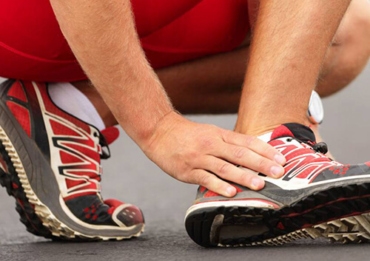

 Ankle Pump: Point toe, then pull back toward you as hard as possible.
Ankle Pump: Point toe, then pull back toward you as hard as possible.
 Inversion – Sit with your legs out straight and cross your uninjured leg over your injured ankle. Wrap the tubing around the ball of your injured foot and then loop it around your uninjured foot so that the Thera-Band is anchored at one end. Hold the other end of the Thera-Band in your hand. Turn you injured foot inward and upward. This will stretch the tubing. Return to the starting position. Repeat 10 times. Do 3 set of 10.
Inversion – Sit with your legs out straight and cross your uninjured leg over your injured ankle. Wrap the tubing around the ball of your injured foot and then loop it around your uninjured foot so that the Thera-Band is anchored at one end. Hold the other end of the Thera-Band in your hand. Turn you injured foot inward and upward. This will stretch the tubing. Return to the starting position. Repeat 10 times. Do 3 set of 10. Eversion – Sitting with both legs outstretched and the tubing looped around both feet, slowly turn your injured foot upward and outward. Hold this position for 5 seconds. Repeat 10 times. Do 3 sets of 10.
Eversion – Sitting with both legs outstretched and the tubing looped around both feet, slowly turn your injured foot upward and outward. Hold this position for 5 seconds. Repeat 10 times. Do 3 sets of 10. Toe Raises: Stand in a normal weight-bearing position. Rock back on your heels so that your toes come off the ground. Hold this position for 5 seconds. Repeat 10 times. Do 3 sets of 10.
Toe Raises: Stand in a normal weight-bearing position. Rock back on your heels so that your toes come off the ground. Hold this position for 5 seconds. Repeat 10 times. Do 3 sets of 10. Single leg balance: Stand without any support and attempt to balance on your injured leg. Begin with your eyes open and then try to perform the exercise with your eyes closed. Then try it with your knee bent. Hold the single-leg position for 30 seconds. Repeat 3 times.
Single leg balance: Stand without any support and attempt to balance on your injured leg. Begin with your eyes open and then try to perform the exercise with your eyes closed. Then try it with your knee bent. Hold the single-leg position for 30 seconds. Repeat 3 times.